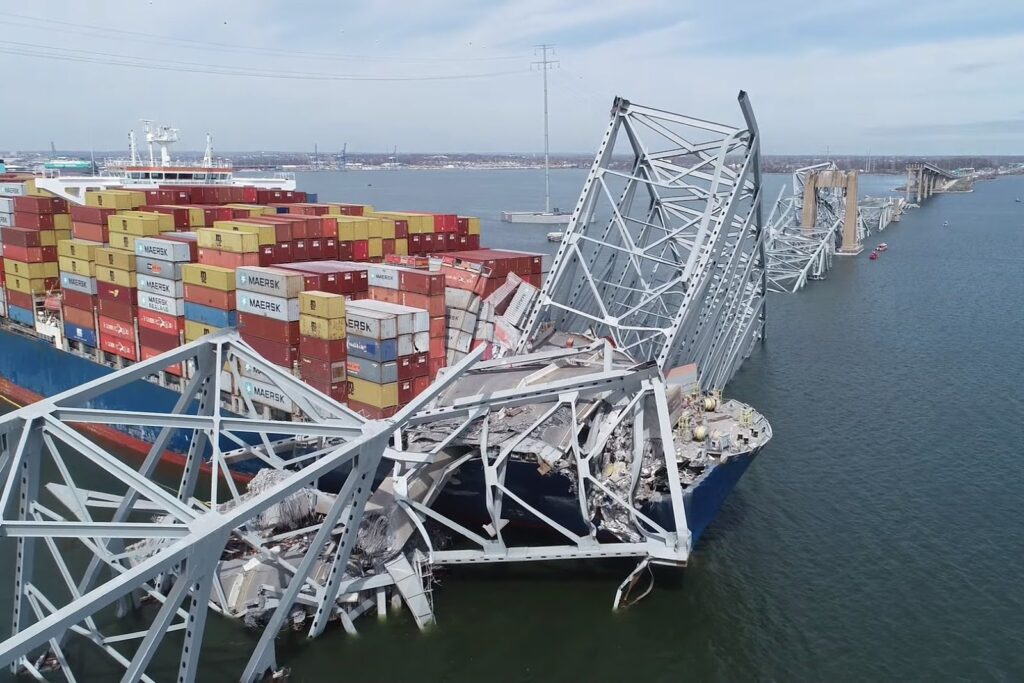A must rethink how we assess the well being of our nation’s bridges
A yr after the Key Bridge collapse, the Nationwide Transportation Security Board is urging the house owners of 68 bridges throughout the U.S. to evaluate their vulnerability to collisions. This second additionally presents a chance to basically rethink the state of the observe for assessing the well being of our nation’s bridges and guarantee companies goal taxpayer funds to the bridges that almost all want restore.
Within the days after the Key Bridge collapse, questions have been swirling on the state of restore of our bridges and what may very well be completed in a different way to keep away from a bridge collapse. However within the yr since, the variety of bridges categorised as in poor situation has ticked down lower than 1 p.c based on the U.S. Bureau of Transportation Statistics.
This isn’t the primary bridge collapse in latest historical past: The Silver Bridge collapse, between West Virginia and Ohio in 1967, introduced in regards to the improvement of the Nationwide Bridge Inspection Requirements. After the 1980 Skyway Bridge collapse, infrastructure design was altered for future initiatives to create structural redundancy and fortification. However are our leaders motivated to take equally daring motion at present?
A yr after the Key Bridge collapse, the Nationwide Transportation Security Board (NTSB) is asking states to revisit collision vulnerability assessments of 68 bridges scattered throughout 19 states. They’re additionally recommending that FHWA, the U.S. Coast Guard and the U.S. Military Corps of Engineers present steerage to bridge house owners on how one can scale back the chance of vessel collision. Congress ought to require this, if the steerage just isn’t forthcoming within the close to time period.
Nevertheless there’s a broader downside: a number of previous bridge collapses have been the results of issues undetected by bridge inspections or from DOTs failing to heed the issues recognized. Within the case of the 2007 I-35W bridge collapse in Minneapolis, the NTSB decided that the bridge failed due to design errors, subpar parts, and bridge modifications that adversely affected bridge load capability. These essential flaws weren’t caught by bridge inspections, and the NTSB really useful adjustments to the inspection regime.
Within the 2013 I-5 Skagit, WA bridge collapse, the NTSB decided that repeated overhead bridge construction injury was because of low clearance truck strikes and no extra warnings or countermeasures to keep away from future strikes. 9 of the ten inspections earlier than the collapse confirmed excessive load bridge strikes, however nothing was completed in response to those repeated warnings.
Within the 2017 I-85 bridge collapse in Atlanta, the NTSB decided flammable supplies that had been improperly saved for 5 years below the bridge led to an extreme warmth hearth, impacting the structural integrity of the bridge. The presence of those flammable supplies was neglected by bridge inspectors and never included of their inspection.
Lastly, within the 2022 Pittsburgh Fern Hole Bridge collapse, the NTSB decided poor high quality inspections led to a failure to establish fracture-critical points and incorrect load ranking calculations. Additionally they discovered inadequate oversight of the Metropolis of Pittsburgh’s bridge inspection program by the Pennsylvania Division of Transportation.
These bridge inspection protocols closely depend on visible inspection, theoretical calculations, restricted coaching and recertification of inspectors, and “engineering judgment” to find out the bridge’s well being. Within the earlier examples, that strategy undercompensated the bridge’s respective poor well being and collapse vulnerability. In different instances, bridges are being weight restricted for worry of structural points when that’s not, in truth, the case. For instance, 10 bridges with load restrictions in Nebraska have been load examined in 2021 throughout three counties utilizing load testing sensors to emulate masses and assess the bridge’s response. In consequence, six of these bridges had their restrictions eliminated. The usual visible inspection discovered circumstances to be worse than they actually have been.
We’re figuring out bridges in want of quick restore whereas not recognizing essential wants elsewhere, that means we’re not concentrating on funding accurately. That is all taking place whereas companies are spending funds on new roads and bridges that additional stretch our sources.
Utilizing know-how like load testing sensors (that are extensively out there and comparatively cheap) can extra precisely assess and establish structural points invisible to the bare eye. Pairing visible inspections with frequent knowledge assortment through sensors can higher establish bridge well being points and end in proactive upkeep This repair it first strategy would result in few-to-no bridges in poor situation and no bridge collapses. Moreover, there’s a must assist sturdy and frequent bridge inspector coaching, to maintain present with the required skillsets and instruments to evaluate bridge well being.
Looking forward to the subsequent floor transportation reauthorization, it’s not nearly securing extra funding—it’s about getting extra from each greenback. The following federal transportation invoice should set a brand new normal, prioritizing trendy instruments for correct assessments, diligently skilled inspector workforce, and a fix-it-first strategy to make sure sources go the place they’re wanted most.


